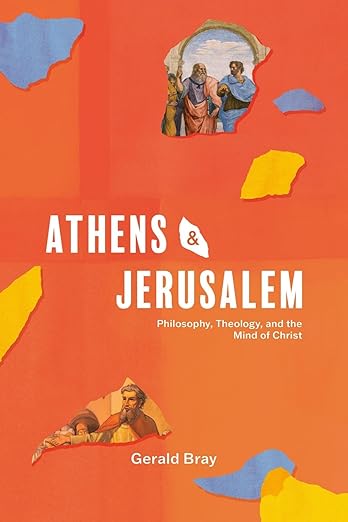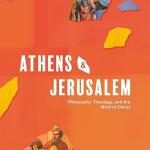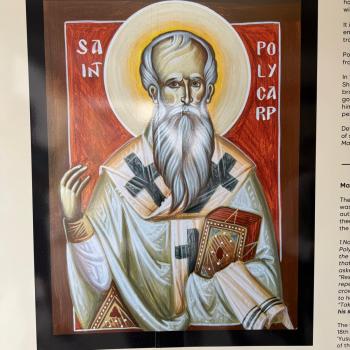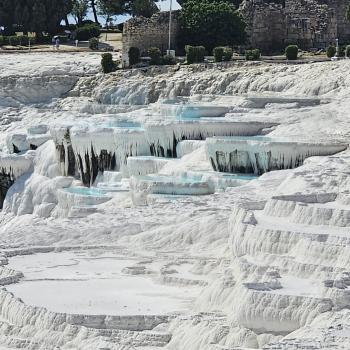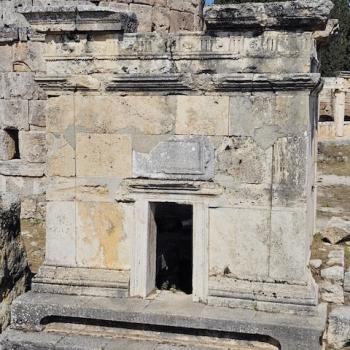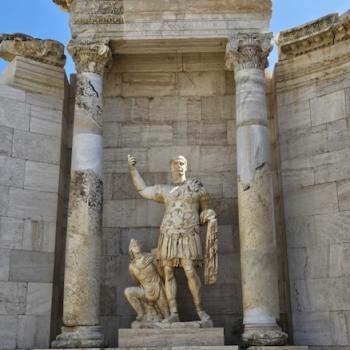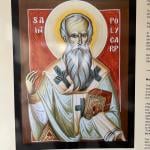As Bray shows, a variety of things went wrong in the Middle Ages in terms of proper theology. For one thing asceticism led to a requirement of celibacy for priests, and at the same time the role of priests was elevated by the development theology of the sacraments. Only priests were holy enough to handle the actual body and blood of Christ. Bray points how this combination is odd, because on the one asceticism tends to suggest that the material world and its interactions (including sex) are inherently evil or tainted by sin, but “what is particularly curious is that in medieval times there was the counterveiling tendency that exalted matter and gave it a status that risked exalting it above the created order. This can be seen most clearly in the development of the sacraments….before the twelfth century there was no classification of ‘sacrament’ in the modern sense. That was the work of Hugo of St. Victor (1096-1141), which was then codified by his contemporary Peter Lombard (1090-1160).” (p. 121). As Bray goes on to explain these traditional beliefs about baptism and the Lord’s Supper were systematized according to principles that ultimately derived from Aristotle (not the Bible). Grace began to be treated as a substance which could be mixed with water and having a cleansing effect (in baptism) or with matter (i.e. bread and wine) and this grace in substance worked ex opere operato, because the sacrament was performed right, almost regardless as to whether the recipient had faith or not. As Bray says, this approach tended to minimize the role of faith. “Rather like a vaccine, baptism did its work regardless, and the person was born again whether he understood that or not” (p. 121). But what if the baptized showed no signs of being changed by baptismal grace? This led to the development of the category of the lapsed, and a system of penance, which could extend even beyond death in a place called purgatory, where one could pay for or be cleansed of ones post-baptismal sins. As Bray says “There was not evidence for any of this in the Bible or in the practice of the early church, but the logic of sacrament theology made it necessary and so it came into being.” (p.123).
What Bray does not discuss is that the NT did not support at all the wider notion of reinstituting OT ideas of clergy priests, temples, or sacrifices, in the church . There are only two sorts of priesthoods in the NT the heavenly high priesthood of Christ (in Hebrews), or the priesthood of all believers, but not a class of clergy priests, who alone could serve the sacrament of communion. Furthermore, by following that sort of OT hermeneutic, it ruled out women from being clergy, despite the evidence to the contrary of women as deacons, teachers, apostles, prophetesses etc.
Bray goes on to show that the doctrine of transubstantiation dependent on the Aristotelean interpretation of material reality. According to Aristotle, everything can be categorized into either substance or accidents, and in the case of bread for example, there is supposed to be a substance that goes by that name. What we have is the substance coming to us in the form of its various accidents, namely its size, weight, taste, color etc. These accidents can and do change, but the substance remains the same– bread is still bread. There is nothing particularly supernatural about the changing of the accidents, but a change in the substance requires a miracle, and that miracle is called transubstantiation– the substance of the bread becomes the body of Christ, and the same with the wine, which becomes the blood of Christ. As Bray will go on to point out, there is no basis for this theology in the story of the last supper, where Christ says ‘this, my body’ and ‘this my blood’ before he had even died on the cross. He could hardly offer the benefits of his atoning death before he died. Never mind if the disciples had taken him literally, it would sound like cannibalism, and Jews did not believe in that sort of human sacrifice, unlike Molech worship. What this sacramental theology did was made clergy indispensable, because they had to do the ritual right for the transformation of the elements into the actual body and blood of Christ. This whole sacramental theology continued to be refined over time and led to formula like that of Aquinas (1225-74) that ‘grace does not destroy nature, it perfects it’ (in his Summa Theologica). It is interesting that the Eastern Orthodox churches demurred from this theology of transubstantiation by correct ritual. In any case, someone should have raised the question of whether Aristotle’s philosophy of substance and accidents was in accord with Biblical truth in the first place. One of the things fueling this Aristotelian trend was the rise of the universities in the 13th century and the rediscovery of the various writings of Aristotle in western Europe. It was Abelard (1079-1142) who rediscovered Aristotle’s essays on logic, and he reasoned that since Christ was the Logos, and logic derives from that term, that it follows that logic should be used in preaching and he taught his students to do so. The problem was, as Bray notes (p. 128), that while Abelard did not have doubts about the veracity of the Bible, he wanted to ground his faith in logic, rather than the other way around. But that made human reason, the final arbiter of the truth of the Bible.
As Bray shows, Aristotle had a major influence on not just Christian theology, but on Jewish and Muslim theology, but the Christians should have been more wary. For one thing Aristotle believed the world was eternal, whereas all three monotheistic religions believed the world was created by a creator God. And Aristotle’s vision of God, comported more with the monotheism of Jews and Muslims, because Christians wanted to add the alien elements of a Trinity and an incarnate Son to their idea of the one God. Bray is able to show the enduring influence of Aristotle throughout the Middle Ages, which even led to the strict nominalism of William of Ockham (1287-1347), who insisted against Plato that there were no eternals like the concept of ‘humanity’ rather only mental constructs that applied to all human beings. He also stressed that the least complicated solution to theological conundrums was likely to be correct.
As I’ve shown in my book Sola Scriptura, it was Ockham, Marsilius of Padua, and later John Wycliffe who used the phrase ‘sola Scriptura’ to oppose the notion that the Pope should be the final authority over the church and the interpretation of the Bible. Rather the Bible should be the final authority, not some human clergy person. These were the precursors to the Reformers. While it is ironic, it is nonetheless true, that the high water mark of the church having control over the intellectual life of society was the medieval period, it was also the growing theology of the papacy and the sacraments, among other things that led to the beginning of the separation of church and state, and the rise even of educational institutions that were not completely beholden to the church— for instance the Free University of Amsterdam. The influence of the church on government and larger society was about to wane, and the Reformation in fact sped up this process, because it led to major divisions between Catholics and Protestants in the west, whereas in the east the Protestant Reformation had no such immediate effect on the Orthodox churches.


